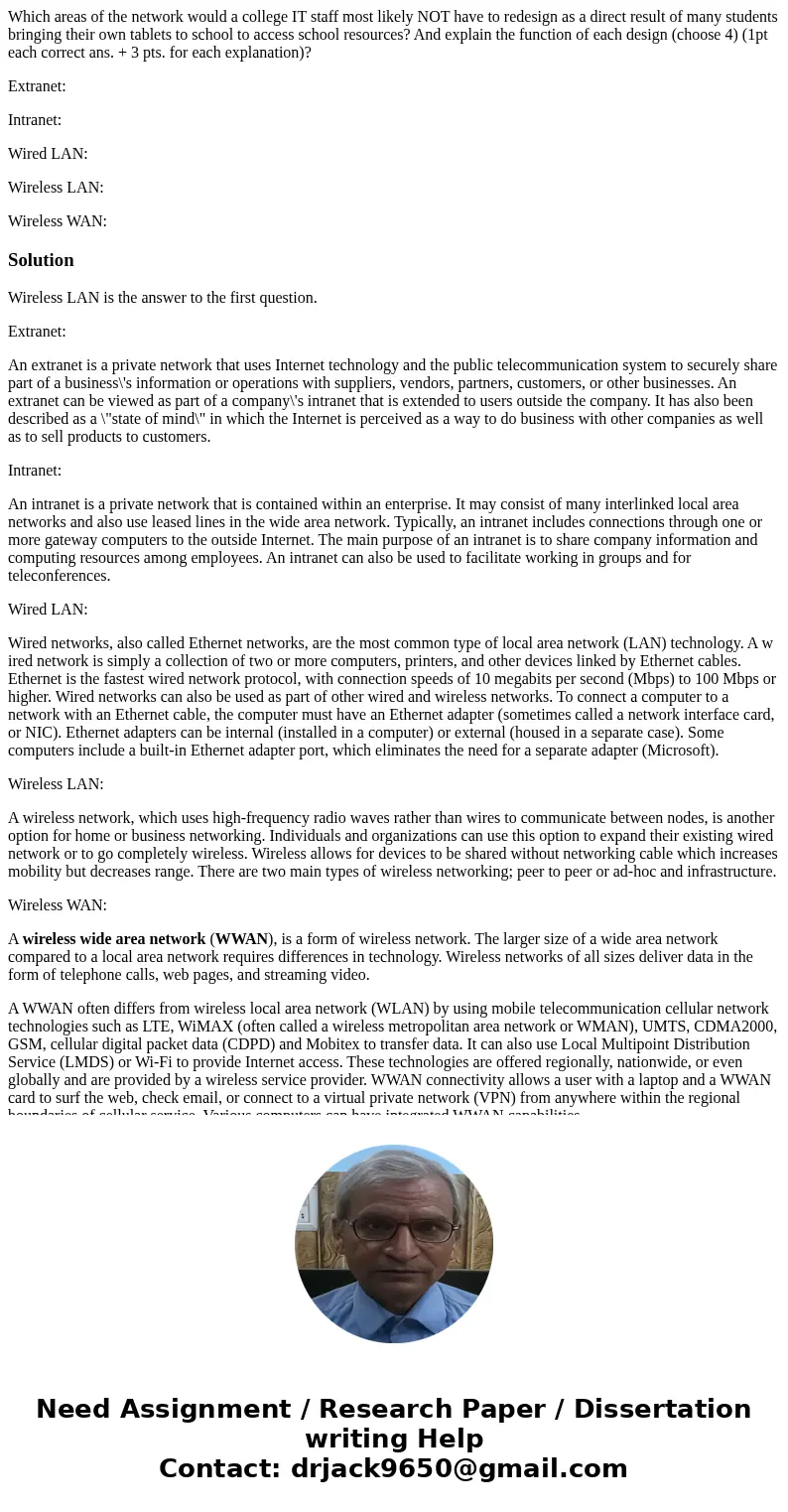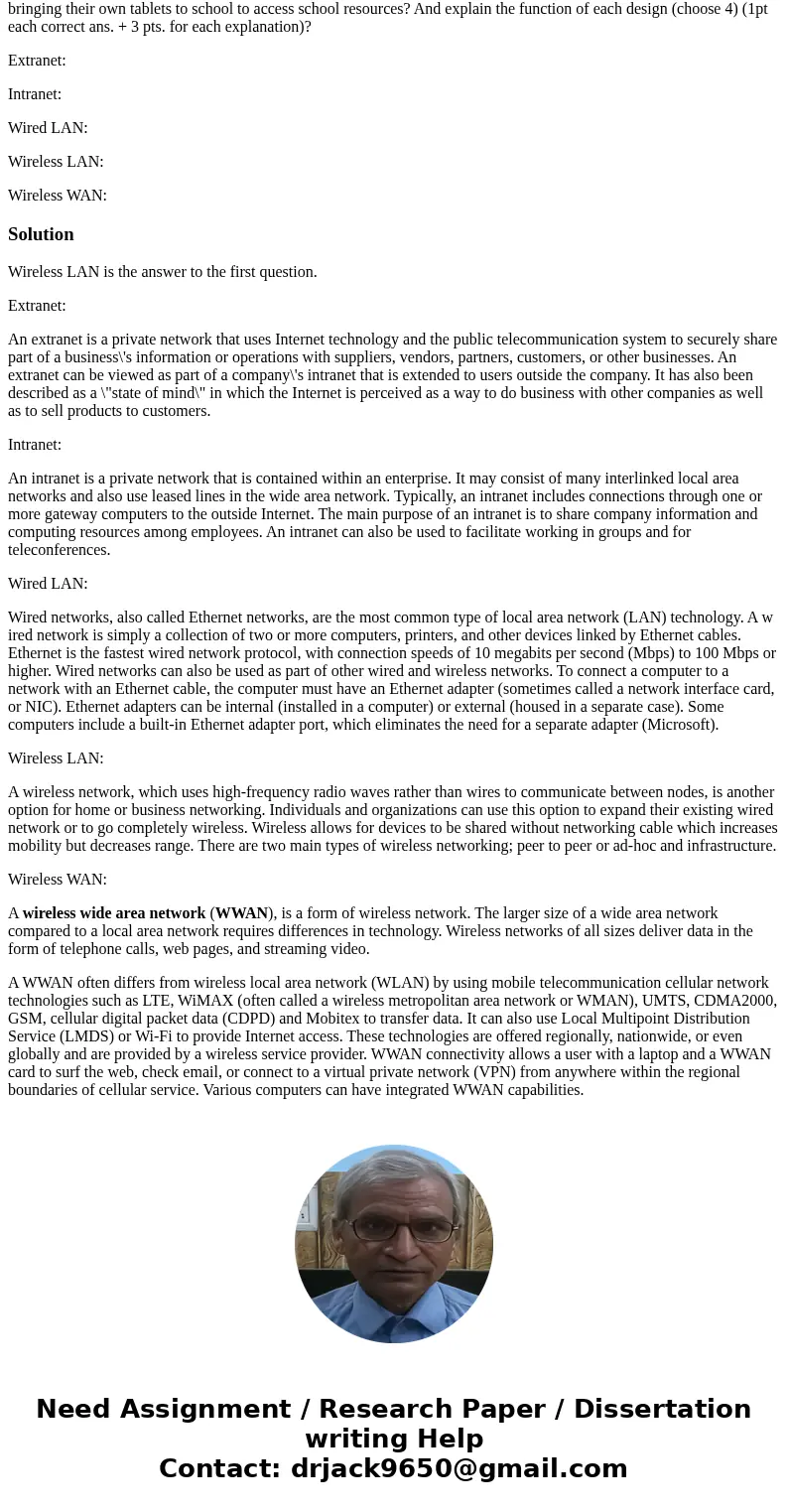Which areas of the network would a college IT staff most lik
Which areas of the network would a college IT staff most likely NOT have to redesign as a direct result of many students bringing their own tablets to school to access school resources? And explain the function of each design (choose 4) (1pt each correct ans. + 3 pts. for each explanation)?
Extranet:
Intranet:
Wired LAN:
Wireless LAN:
Wireless WAN:
Solution
Wireless LAN is the answer to the first question.
Extranet:
An extranet is a private network that uses Internet technology and the public telecommunication system to securely share part of a business\'s information or operations with suppliers, vendors, partners, customers, or other businesses. An extranet can be viewed as part of a company\'s intranet that is extended to users outside the company. It has also been described as a \"state of mind\" in which the Internet is perceived as a way to do business with other companies as well as to sell products to customers.
Intranet:
An intranet is a private network that is contained within an enterprise. It may consist of many interlinked local area networks and also use leased lines in the wide area network. Typically, an intranet includes connections through one or more gateway computers to the outside Internet. The main purpose of an intranet is to share company information and computing resources among employees. An intranet can also be used to facilitate working in groups and for teleconferences.
Wired LAN:
Wired networks, also called Ethernet networks, are the most common type of local area network (LAN) technology. A w ired network is simply a collection of two or more computers, printers, and other devices linked by Ethernet cables. Ethernet is the fastest wired network protocol, with connection speeds of 10 megabits per second (Mbps) to 100 Mbps or higher. Wired networks can also be used as part of other wired and wireless networks. To connect a computer to a network with an Ethernet cable, the computer must have an Ethernet adapter (sometimes called a network interface card, or NIC). Ethernet adapters can be internal (installed in a computer) or external (housed in a separate case). Some computers include a built-in Ethernet adapter port, which eliminates the need for a separate adapter (Microsoft).
Wireless LAN:
A wireless network, which uses high-frequency radio waves rather than wires to communicate between nodes, is another option for home or business networking. Individuals and organizations can use this option to expand their existing wired network or to go completely wireless. Wireless allows for devices to be shared without networking cable which increases mobility but decreases range. There are two main types of wireless networking; peer to peer or ad-hoc and infrastructure.
Wireless WAN:
A wireless wide area network (WWAN), is a form of wireless network. The larger size of a wide area network compared to a local area network requires differences in technology. Wireless networks of all sizes deliver data in the form of telephone calls, web pages, and streaming video.
A WWAN often differs from wireless local area network (WLAN) by using mobile telecommunication cellular network technologies such as LTE, WiMAX (often called a wireless metropolitan area network or WMAN), UMTS, CDMA2000, GSM, cellular digital packet data (CDPD) and Mobitex to transfer data. It can also use Local Multipoint Distribution Service (LMDS) or Wi-Fi to provide Internet access. These technologies are offered regionally, nationwide, or even globally and are provided by a wireless service provider. WWAN connectivity allows a user with a laptop and a WWAN card to surf the web, check email, or connect to a virtual private network (VPN) from anywhere within the regional boundaries of cellular service. Various computers can have integrated WWAN capabilities.


 Homework Sourse
Homework Sourse